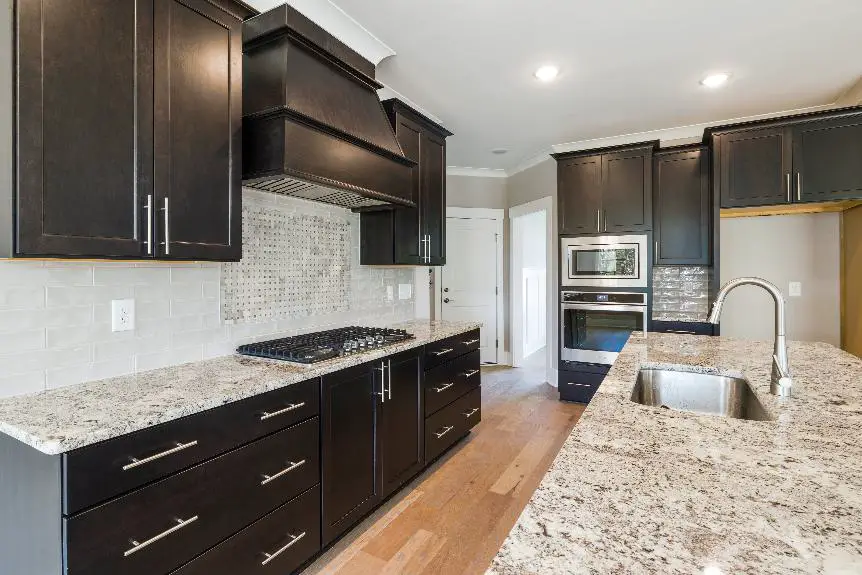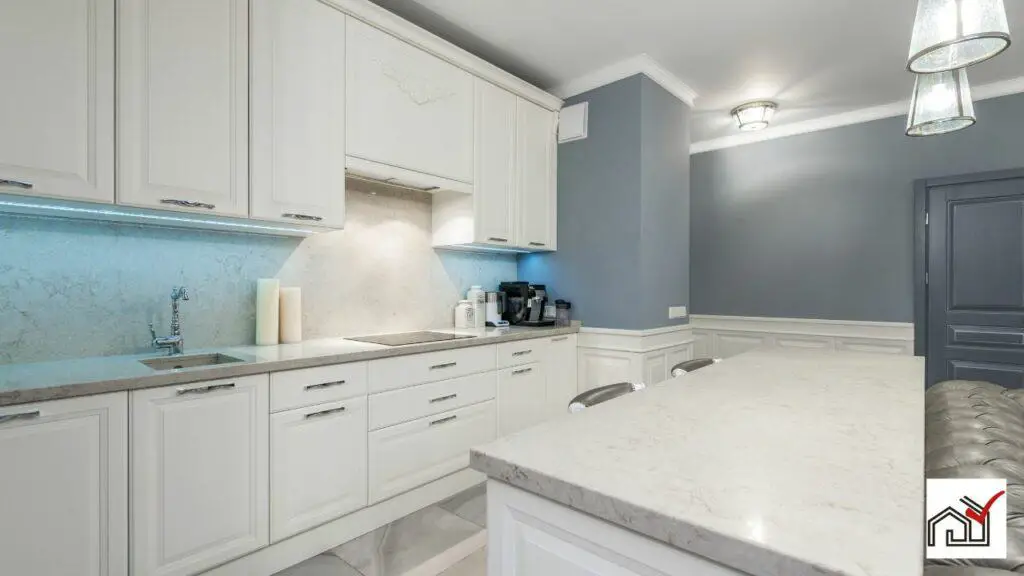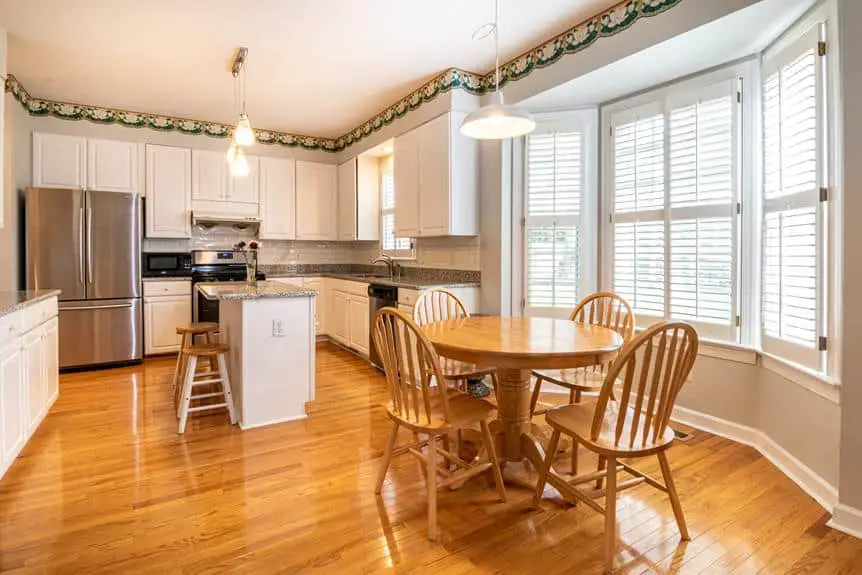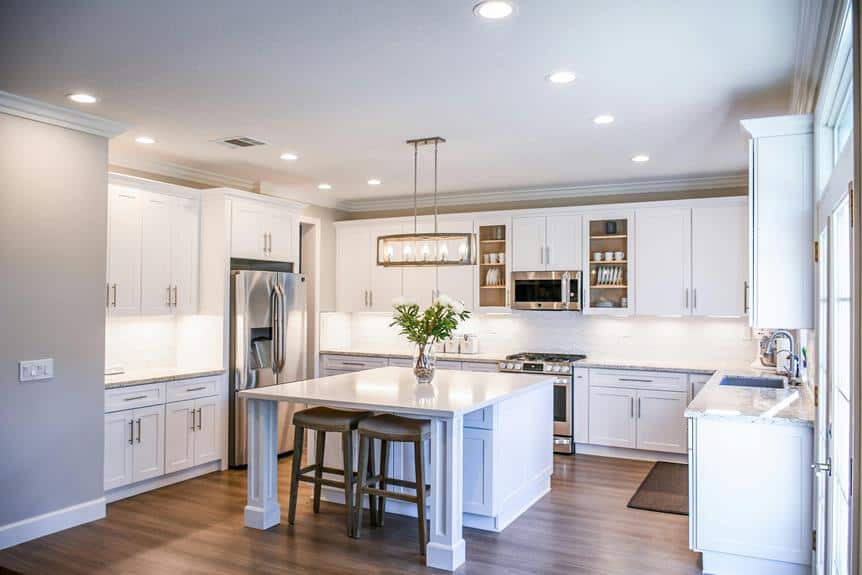Kitchen cabinets do not necessarily have to match interior doors. The decision depends on the desired look and functionality of the space.
Matching finishes and styles can create a cohesive look, while contrasting designs can add interest with different textures and colors.
The choice should consider the home's architecture, kitchen size, and the effect of lighting. It's important to balance aesthetics with practicality for everyday use.
Design experts often help homeowners make a decision that suits both their taste and functional needs.
Understanding Design Harmony
Design harmony is essential for creating a visually pleasing and cohesive home interior. It involves coordinating elements like kitchen cabinets and interior doors. The goal is to ensure that these components work together to form a unified appearance that contributes to the home's overall design.
When selecting design elements, it's important to match colors and ensure the room's aesthetic flows into other areas of the home seamlessly. The home's style influences the design choices; modern homes might feature simple lines and neutral colors, whereas traditional homes may have detailed designs and varied colors. Consistency is key to avoid design clashes between different rooms.
Homeowners can also blend different textures and materials within their chosen color palette to keep the space interesting but harmonious. Personal style should be balanced with design rules to make sure each element adds to the room's feel without being overwhelming.
Pros of Matching Cabinets and Doors
Matching kitchen cabinets with interior doors can enhance the visual harmony of a home. This design choice creates a unified look and can make the transition between rooms appear smoother. When the styles and colors of cabinets and doors align, it gives the space a cohesive appearance and indicates a well-considered design.
Matching the cabinet and door style can also emphasize the home's architectural features. A modern home may look better with cabinets and doors that have a sleek, flat-panel design, while a traditional home might suit raised-panel doors and cabinets with similar details. This can create a more refined and deliberate style throughout the house.
Choosing to match cabinets and doors can also make it easier to make design decisions. With fewer options to consider, selecting finishes and hardware that fit the home's theme becomes simpler, saving time and ensuring consistency.
Cons of Matching Fixtures
Matching kitchen cabinets with interior doors can create a uniform look, but it may limit creativity and individual expression in home design. The commitment to a single color or material reduces the opportunity to employ diverse colors or textures that add depth or reflect the homeowner's personal taste.
Uniformity, while potentially appealing, could make a home resemble a showroom rather than showcasing the personality of its occupants. An eclectic style, which mixes different design periods and styles, can provide balance and visual interest, preventing a monotonous atmosphere.
Additionally, varying cabinet and door styles can meet different functional needs. For instance, textured cabinet doors might be practical for a frequently used kitchen, whereas smooth doors could be better for areas with less traffic. Mixing and matching enables customization to suit the specific function and aesthetic of each space.
Exploring Alternative Strategies
Homeowners looking to enhance their kitchen's appearance can explore alternative strategies beyond matching cabinet doors. They may choose contrasting colors or finishes for cabinets and interior doors to complement other kitchen elements, providing a personalized and modern aesthetic. Mixing traditional and contemporary design elements can also create a distinctive kitchen space.
For example, pairing a bold cabinet color with a neutral interior door can be visually appealing and prevent the space from feeling too busy. It's essential to consider the house's overall style when deciding on a mix or match approach. A unified appearance can still be achieved through common design features like matching hardware or textures.
It's important to balance individual preferences with the home's architectural style. An eclectic mix may work well in a contemporary open-plan kitchen, while a more traditional setup may be appropriate for a historic home. Practicality and durability should also be taken into account when considering aesthetics.
In deciding whether to coordinate or diversify the kitchen cabinets and interior doors, homeowners should aim for a space that is both harmonious and functional. While matching doors can ensure consistency, varying colors and styles can introduce depth and personality. Homeowners should experiment with different combinations, consult with experts, and consider their daily needs before finalizing their choice.
Color Coordination Tips
Color coordination is important for a cohesive kitchen design. Consider your home's overall color scheme when choosing cabinet and door colors. Wood-toned cabinets add warmth and can match doors for a uniform look. Alternatively, cabinets can complement doors for design flexibility.
Decide if you want your kitchen to seamlessly blend with the rest of your home by matching cabinet and door colors. For a more distinct look, use contrasting colors, but ensure the contrast is deliberate and fits the room's design.
Traditional homes often match woodwork for consistency, while modern homes can use varied colors. Aim to maintain some continuity in color, finish, or material to avoid a disjointed look.
Ultimately, whether to match kitchen cabinets with interior doors depends on personal taste and the intended design effect. Consider different samples and seek professional advice to achieve the right balance for your home.
Balancing Aesthetics and Functionality
When choosing whether kitchen cabinets should match interior doors, it's important to consider both appearance and use. Matching doors and cabinets can create a unified look, but their functions are different. Kitchen cabinets are used for storage and are frequently accessed, while interior doors provide privacy and sound insulation.
The style of the home influences whether cabinets and doors should match. For example, contemporary homes may opt for simple designs and neutral colors, whereas traditional homes might prefer wood finishes and detailed designs. The match should not compromise the functionality or comfort of the home.
Homeowners' preferences are important, but they should be weighed against practicality. Materials and finishes for kitchen cabinets should be durable, especially in high-use areas.
Consulting with design experts can help homeowners find a balance between aesthetics and functionality, ensuring their choices improve the home's use and reflect their personal style.
Making Your Final Decision
Deciding whether to coordinate kitchen cabinets with interior doors involves evaluating personal style and practical considerations. Determine if you prefer a modern or traditional home style, as this will guide your choice toward matching or contrasting these elements.
Personal preference is important. Some may choose matching materials and styles for a unified appearance, while others may select contrasting designs to add interest.
Seeking advice from an interior designer, such as those from Home Design Institute SASU, can provide perspective on current and enduring design trends.
Also, assess the size and function of your kitchen. Larger kitchens may accommodate varying styles, whereas smaller kitchens might benefit from a uniform look for cohesiveness.
In the end, the decision is personal. Balance your taste with the functionality and style of your home to make a choice that fulfills your design goals and suits your everyday living.




